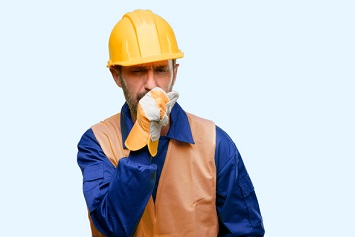The National Institute for Occupational Safety and Health (NIOSH) released detailed recommendations to help employers maintain acceptable indoor environmental quality (IEQ) and reduce exposures to dusts, gases, and contaminants during construction and renovation projects.
The institute has conducted several health hazard evaluations (HHEs) at worksites where health concerns were reported at building and renovation projects in occupied buildings. NIOSH investigators who conducted the HHEs identified issues that could affect IEQ, such as a lack of dust control, limited communication with occupants about hazards related to the work being done, and the use of high-emissions building materials.
Construction, demolition, renovation, or repair projects sometimes involve tasks that can release airborne dusts, gases, organic vapors, microbiological contaminants, and odors or produce high levels of noise.
Building occupants may report symptoms during these projects such as congestion, dizziness, fatigue, headaches, nausea, and sinus problems, as well as irritation of the eyes, nose, or throat.
Workers in spaces adjacent to these construction projects also have reported health complaints. Such symptoms may result from exposures to known agents or a perceived risk from exposure to unknown agents, according to environmental and occupational health researchers.
However, they also found that exposures to construction materials, dampness, and mold can be linked to asthma and asthma-like symptoms.
Employers at worksites in occupied buildings can reduce and control exposures for workers and building occupants with a number of methods, including:
- Ensuring that contractors on construction and renovation projects understand and are aware of the potential impact of construction and renovation activities on building occupants;
- Anticipating construction and renovation activities that may generate contaminants; and
- Implementing controls to minimize exposures of both construction workers and building occupants.
NIOSH examined instances that included an office building undergoing a multiyear modernization project and a school that had undergone renovations that included the addition of administrative space, classrooms, and a library, as well as communications systems, electrical wiring, plumbing, and ventilation systems.
NIOSH developed recommendations for maintaining acceptable IEQ during construction and renovation projects based on its experiences from IEQ site visits and a review of the scientific literature.
Employers need to seek input from building managers, engineers, the general contractor, and subcontractors, as well as building occupants, to maintain acceptable IEQ during construction and renovation activities.
There also are federal regulations and standards for certain exposures, such as:
- The Occupational Safety and Health Administration’s (OSHA) standards for asbestos and lead;
- The EPA’s Asbestos Hazard Emergency Response Act (AHERA) regulations for school-building demolition and renovation projects; and
- The EPA’s Asbestos National Emissions Standards for Hazardous Air Pollutants (NESHAP).
NIOSH’s recommendations include guidance for initial planning; contract bid specifications; control options for specific tasks and building configurations; protections for heating, ventilation, and air conditioning (HVAC) systems; project specifications; good work practices; means of effective communications; and steps to take once projects are completed.
Employers also can find guidance in industry best practices from the American Society of Heating, Refrigerating, and Air-Conditioning Engineers and the Sheet Metal and Air Conditioning Contractors’ National Association, the institute noted.

